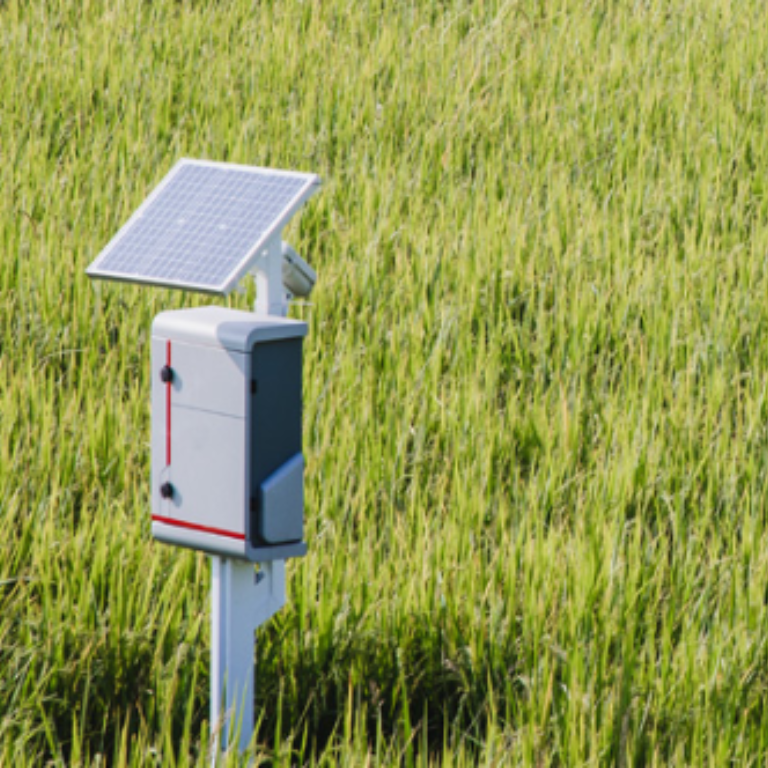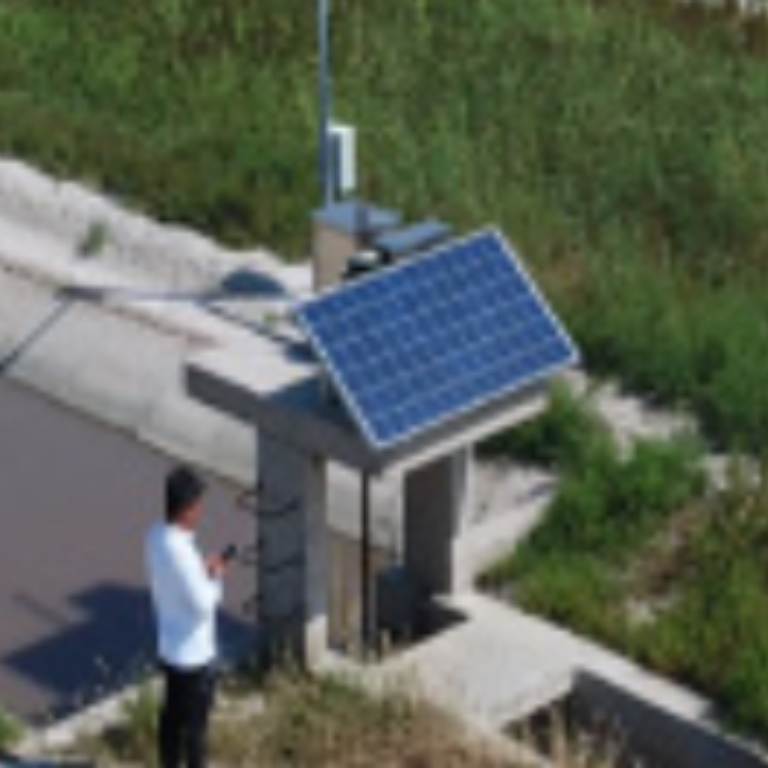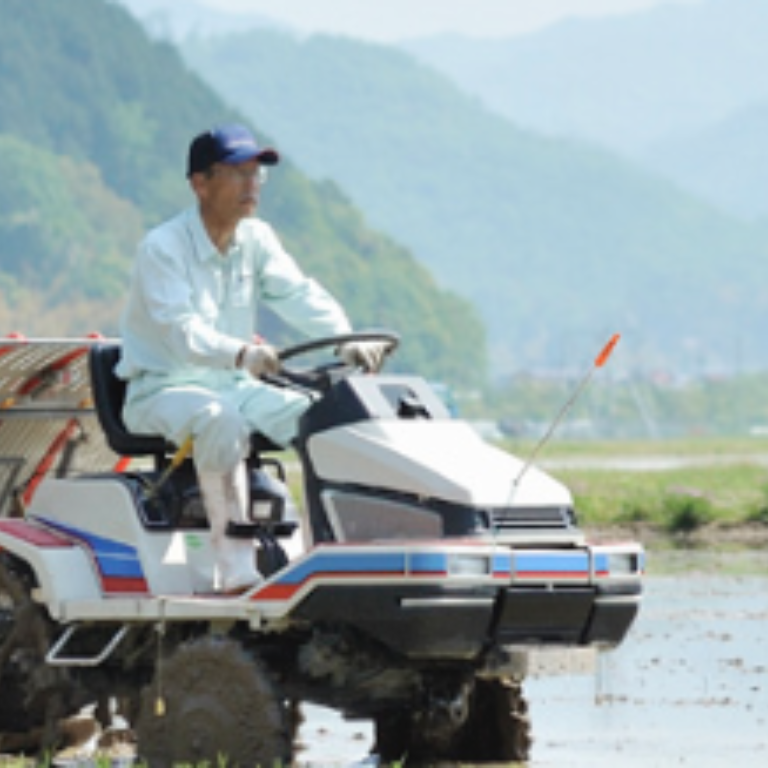5G Transformation Hub
How 5G can Boost Agricultural Output
Automated farming solution lowers fresh water usage and some manpower costs by 40%
ZTE and China Mobile are using 5G connectivity to fully automate rice production on 12,000 acres of marginal land near Dayan City, Jilin Province. A smart irrigation system is helping to make the depleted soil fertile again, while remote controlled machinery and drones have made the farm operations more efficient, productive and sustainable.
Select a project
Contents
Challenge
The world needs to increase sustainable food production to support a growing population cost-effectively. Yet farmers face a number of hurdles. Large amounts of marginal or depleted land cannot be cultivated economically using traditional methods, while urban migration has led to labour shortages in many agricultural areas.
Solution
ZTE and China Mobile have developed a 5G-enabled farm management solution that is designed to use water, fertilizer, fuel and seeds as efficiently as possible, while dramatically lowering labour costs. The solution brings together a smart irrigation system that optimises the supply of water, remote control of farm vehicles and 5G-connected drones that can monitor the health of the crops. A worker located in the farmhouse can use the 5G connectivity to remotely control between three and five machines simultaneously, significantly boosting productivity.
Impact & Statistics
Automated farming in the trial site in Jilin Province in 2022 yielded economic benefits of 3.3 million yuan (€450,000), according to ZTE, through a 10% increase in output, together with savings in materials and labour costs. The smart irrigation system uses 40% less water than a conventional system, while ZTE says that unmanned tractors are 50% more efficient than a conventional tractor. Similarly a 5G unmanned harvester is 60% more efficient than a conventional equivalent.
Wider Implications
Supported by 5G, automated farming solutions could enable much more marginal land to be cultivated, increasing food production. As well as lowering costs and increasing yield, automation could help to address many of the labour shortages in the agricultural sector. One worker can use 5G connectivity to monitor and control several machines at once from a comfortable environment, rather than being limited to driving a single machine in-person.
Stakeholders
ZTE, China Mobile Jilin Company
02
How 5G can Boost Agricultural Output
Automated farming solution lowers fresh water usage and some manpower costs by 40%
Over-farming, climate change or a combination of the two can make once-rich agricultural land unproductive. With enough fresh water and fertiliser, such land can become fertile again, but the recovery process can be expensive and time-consuming.
To try and make this process as efficient as possible, ZTE, China Mobile Jilin Company, China Mobile (Chengdu) Industrial R&D Institute and their partners have developed a fully automated farming solution underpinned by a standalone 5G network. The solution brings together a smart irrigation system, remote control of farm vehicles and 5G-connected drones that can monitor the health of crops from above.
Conducted in 2022, the first trial of these technologies ran across two adjacent farms near Da'an City in Jilin Province. The trial produced 40,000 tons of rice from 46.7km2 of saline land that had been degraded by climate change or over-farming. ZTE says the output was 10% higher than on traditional farms with a comparable environment.
ZTE says the trial indicated automated faming of this amount of land could bring annual economic benefits of 3.3 million yuan (€450,000). Of that 3.3 million yuan, almost 800,000 yuan relates to the output increase, while 2.5 million yuan is due to savings in materials and labour costs. The 5G-enabled management system is designed to use water, fertilizer, fuel and seeds used as efficiently as possible by continuous measurement of PH (acidity) and EC (electrical conductivity).
“This 5G project is dealing with the most important question of our time, “how can we make soil, which couldn’t be used for farming any more, fertile again,” says Hans Neff, Senior Director of the Global Marketing & Solution Sales Division at ZTE Corporation. “We now have a solution that can be easily replicated all over the world.”
For the trial, the 5G network connected 4,000 sensors and actuators that monitor the field hydrology, precisely control the water supply (through connected gates) and track the flow rate, flow pressure and water quality. This continuous monitoring and control means the farm is able to use about 40% less water than a conventional operation, according to ZTE’s estimates, while irrigation-related manpower efficiency has increased seven fold.
The low latency 5G network also gives remote staff fingertip control over the farm machinery. Each tractor, harvester and transplanting machine carries two to five connected HD cameras. The resulting video streams are transmitted back to the remote operator in real-time using the 5G connectivity.
The operator inside the farmhouse can remotely control and monitor three to five machines at once using live video feeds, according to ZTE. That clearly represents a major improvement in efficiency, compared to the traditional approach of driving machines in-person.
Remote control of this kind also generates significant fuel and time savings, as there is no need for the driver to travel to and from the farm land. If necessary, remote controlled machinery can also be operated 24 hours a day.
Customer says that unmanned tractors are 50% more efficient than a conventional tractor, while employing a driverless transplanting machine reduces the manpower requirement by 40%. Similarly, a 5G unmanned harvester is 60% more efficient than a conventional equivalent.
The 5G connectivity also enables drones to regularly patrol the farm, which is far quicker than conducting manual inspections. The drones are used to monitor the quality of the crops, detect any pest infestations or wild animals that have strayed into the fields, and spot any damage to irrigation channels or other infrastructure. Controlled by the China Mobile Lingyun Cloud Platform, these drones upload 4K video footage over the 5G network, which can then be analysed using artificial intelligence.
“In a 4G network, videos need to be stored locally and returned for analysis. This mode is relatively inefficient,” says Hans Neff of ZTE. “When 5G technology is used, video is backhauled in real time, and back-end analysis is performed in real time to improve efficiency.”


Hans Neff
Senior Director of the CTO Group at ZTE Corporation
03
A mixture of public and private infrastructure
The wide area coverage of 5G makes the technology particularly well suited for managing agricultural land, which is generally spread over large areas.
5G networks are also much more responsive and power-efficient than the satellite systems that are used to provide connectivity in some rural areas. As the signals have to travel to and from a satellite, such systems can drain equipment batteries quickly and can’t be used effectively for remote control.
5G has other advantages over 4G, Wi-Fi and satellite connectivity. The technology has been designed to support thousands of simultaneous connections, while also providing the high-speed uplink required to capture live video streams from the equipment on the farm. 5G networks can also provide precise positioning: ZTE says the connectivity can be used to determine the exact location of equipment on the farm.
The farmland in Jilin Province is connected using a mixture of public 5G base stations and private base stations supporting both low-band and mid-band 5G spectrum. In the case of the public base stations, China Mobile allocates a dedicated slice of connectivity to support the automated farming solution.
Hans Neff of ZTE says employing a mixture of public and private infrastructure is efficient. “If you have already a public site and the coverage and the services are sufficient, you do slicing on the public site,” he explains. “But in cases where you have machines for remote surveillance, and cameras are transmitting in the uplink, and you have the centralised production units, then you use dedicated cells.”
Four of the base stations employ ZTE’s NodeEngine solution – a compute board that integrates network functions, edge compute capacity and applications. That allows for local data offloading at base station level, while supporting the low latency, high throughput and high security required for various industrial applications. The NodeEngine base stations, which are used to enable low latency control of the farm machinery, are supplemented by a edge compute server with a dedicated 5G core, physically located in the farm itself, which runs the network policy and manages authentication.
ZTE believes this modular architecture will make the automated farming solution straightforward for mobile operators to deploy. “For the mobile industry, it is the perfect modular use case combining coverage, performance, low latency and high availability services into one ecosystem, enabling a worldwide implementation of this technology,” says Hans Neff of ZTE.

04
Testing the solution over different terrain
Now underway, the next phase of the pilot is to deploy the system over a much larger area of farmland - an additional 33,000 acres – spanning 10 individual farms.
ZTE estimates that this land could produce 110,000 tons of rice, while the automated solution would generate economic benefits of more than 57 million yuan, through an output increase and savings on labour and resources.
ZTE and China Mobile want to test the automated farming solution with different kinds of land growing different types of crops. “We want to try other sizes of farms and see if this productivity still can be held as high for different kinds of use cases,” says Hans Neff of ZTE.
As China already has nationwide 5G networks, the automated farming solution could ultimately be deployed across this vast country. “There are many large pieces of land that has been overused, lacks adequate nutrient properties for agriculture, or has been declared not potent enough for farming,” says Hans Neff of ZTE. “Now these pieces of land can actually be used for farming adding to the economic benefit of the society, ensuring food security feeding individuals and families.”
As well as enabling marginal land to become more productive, the automated farming solution could be used to detect when best to give established agricultural land a rest so that it can recover. The benefits of periodically leaving land fallow is well recognised in agriculture, but technology could be used to optimise this practice.
“The benefit here is that you don't overuse the ground for one specific thing,” explains Hans Neff. “You have a precise fertilisation process, a precise watering process, a precise planting and cropping process, and it allows you to stretch those recovery times.”
The widespread adoption of automated farming systems could also help to ease labour shortages, which have hampered agriculture in many parts of the world, while also making rural areas more prosperous. ZTE believes the pilot solution deployed in Jilin Province could ultimately increase annual income per capita by 20,000 yuan in rural areas.
“Farm work is not easy work and it can be very intense in summer, when for a period of time you need specialists doing specific things,” notes Hans Neff. “This solution means a specialist is less exhausted because they don’t have to sit on a machine and be shaken around for eight hours. They can basically remote control services and machines from a much more comfortable environment.”


Hans Neff
Senior Director of the CTO Group at ZTE Corporation
05
About
About the GSMA
The GSMA is a global organisation unifying the mobile ecosystem to discover, develop and deliver innovation foundational to positive business environments and societal change. Our vision is to unlock the full power of connectivity so that people,
industry, and society thrive. Representing mobile operators and organisations across the mobile ecosystem and adjacent industries, the GSMA delivers for its members across three broad pillars: Connectivity for Good, Industry Services and Solutions, and Outreach. This activity includes advancing policy, tackling today’s biggest societal challenges, underpinning the technology and interoperability that make mobile work, and providing the world’s largest platform to convene the mobile ecosystem at the MWC and M360 series of events.
For more information, please visit the GSMA corporate website at www.gsma.com.
Follow the GSMA on Twitter: @GSMA.
GSMA 5G Transformation Hub
The GSMA 5G Transformation Hub is a source of information on some of the most innovative 5G solutions in the world. This portal contains case studies detailing design, benefits, key players, measured value and the future impact of scaling up these 5G solutions worldwide. The 5G Era is now firmly established and this family of standardised GSM technologies, including mmWave, are being rolled out successfully across the globe. The GSMA 5G Transformation Hub, launched at MWC Barcelona in 2022, provides details of how 5G is best placed to deliver real value for a range of key sectors including manufacturing, energy, transportation, media and live entertainment, smart cities and construction. Many more case studies will be added, in the coming months, covering even more industries and the GSMA is asking Members to nominate innovative 5G case studies to add to this global digital showcase. The 5G Transformation Hub is sponsored by Qualcomm. This case study is sponsored by ZTE Corporation.
About this case study
This case study is for information only and is provided as is. The GSM Association makes no representations and gives no warranties or undertakings (express or implied) with respect to the study and does not accept any responsibility for , and hereby disclaims any liability for the accuracy or completeness or timeliness of the information contained in this document. Any use of the study is at the users own risk and the user assumes liability for any third party claims associated with such use.